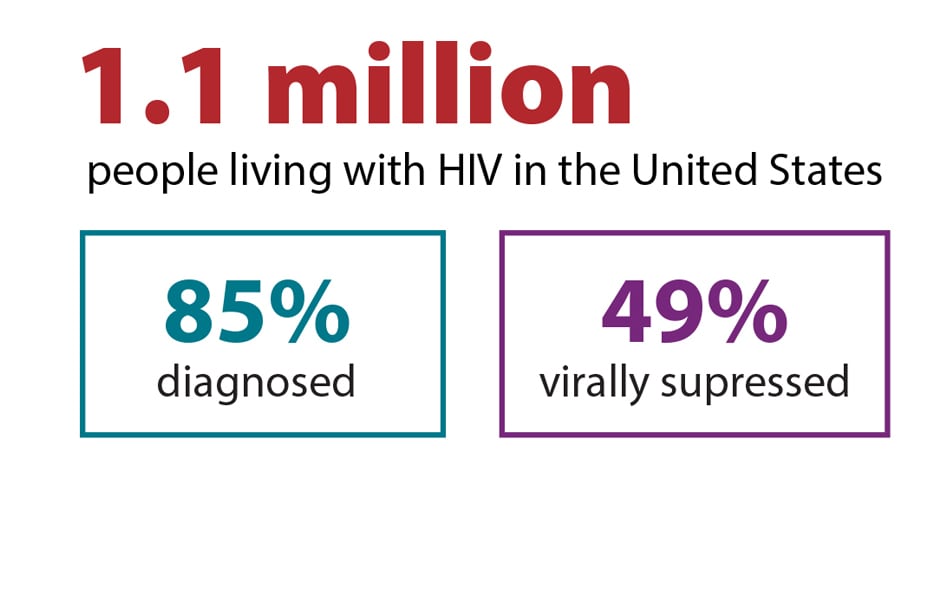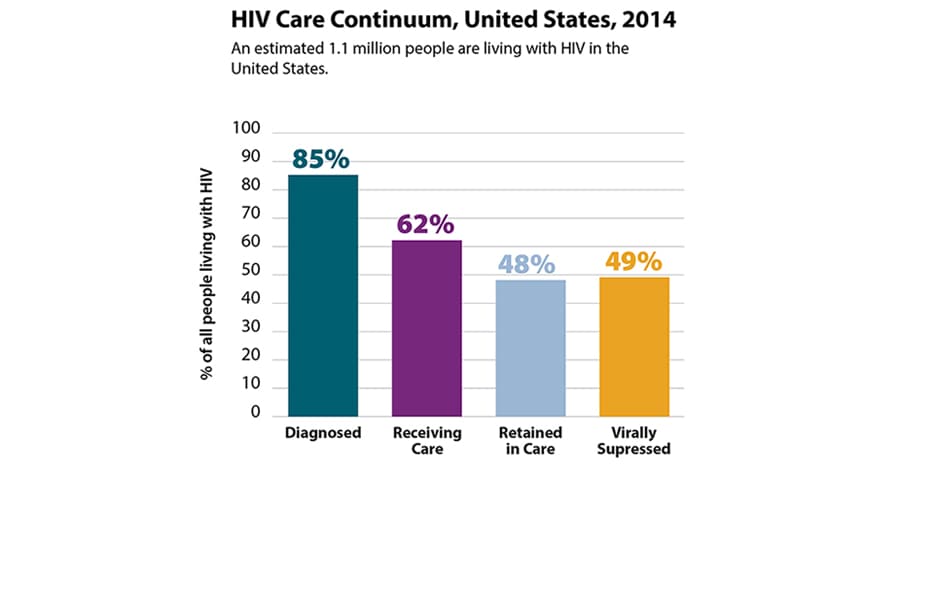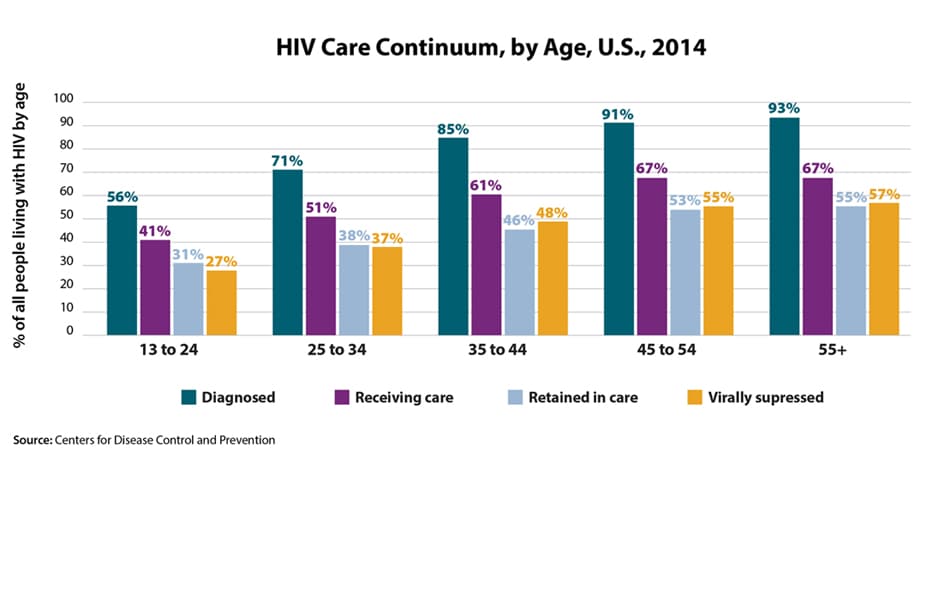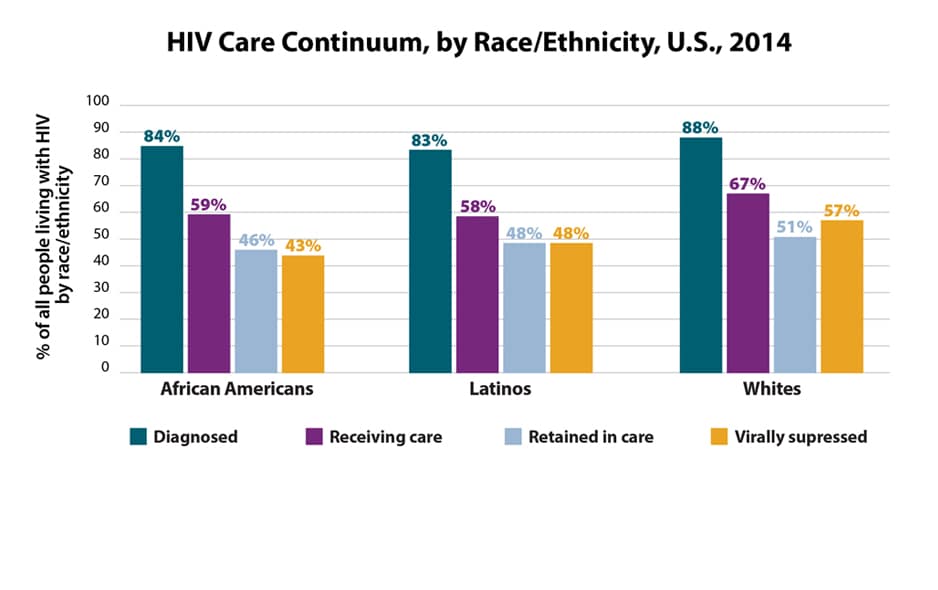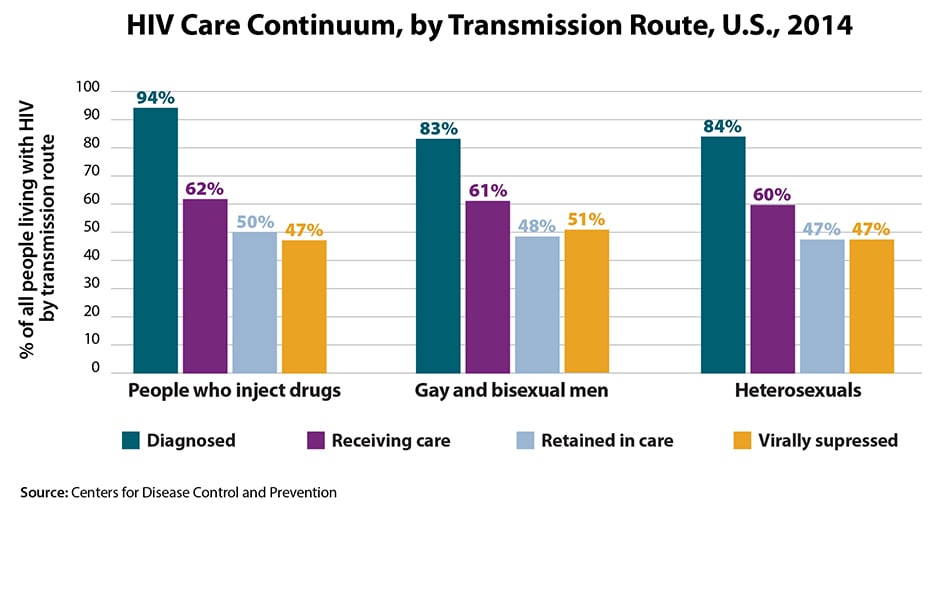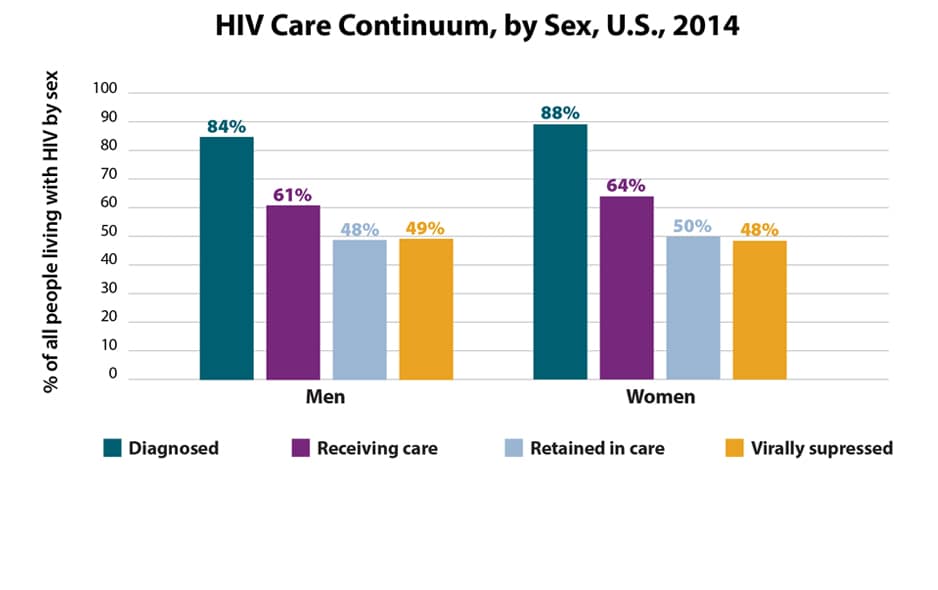HIV Continuum of Care, U.S., 2014, Overall and by Age, Race/Ethnicity, Transmission Route and Sex
July 27, 2017 – Latest Data Show Increase in People with HIV Who have the Virus Under Control
A core focus of CDC’s high-impact HIV prevention strategy is to help ensure everyone living with HIV is aware of their infection; receives treatment; and ultimately achieves viral suppression — because people who achieve and maintain viral suppression live longer, healthier lives and are at extremely low risk for transmitting HIV to others. For a person to achieve viral suppression, several steps must be completed, including testing/diagnosis, receipt of HIV care, and retention in HIV care. The HIV Care Continuum shows how the nation is doing at each step, from diagnosis through viral suppression.
In July 2017, CDC published a comprehensive analysis of the U.S. HIV care continuum showing that, in 2014, of the estimated 1.1 million people living with HIV in the United States, 85% knew they were infected, and about half (49%) were virally suppressed. The analysis also details differences in HIV diagnosis, care and treatment by age, race / ethnicity, transmission route, and sex. It shows that although the United States has reached some important milestones, sustained, focused efforts are needed so that everyone living with HIV is aware of their infection and can effectively control the virus through treatment.
- Press Release: More people with HIV have the virus under control
- Slide Set: Selected National HIV Prevention and Care Outcomespdf icon
- Infographic: HIV in the United States – Continuum of Careimage icon
Graphics: HIV Continuum of Care, U.S., 2014
Overall and by Age, Race/Ethnicity, Transmission Route and Sex
HIV diagnosis, care and viral suppression are top prevention priorities. When HIV is effectively treated, people living with HIV stat healthy and their chance of passing the virus to others is dramatically reduced. The HIV Care Continuum shows how the nation is doing at each step, from diagnosis through viral suppression. This new analysis details differences in HIV diagnoses, care and treatment by age, race/ethnicity, transmission route and sex.
The following high-resolution, public domain images are ready to download and print in your publication. Click on a graphic to see it in high-resolution. These images are in the public domain and are thus free of any copyright restrictions. As a matter of courtesy, we ask that the content provider be credited and notified of any public or private usage of an item.
